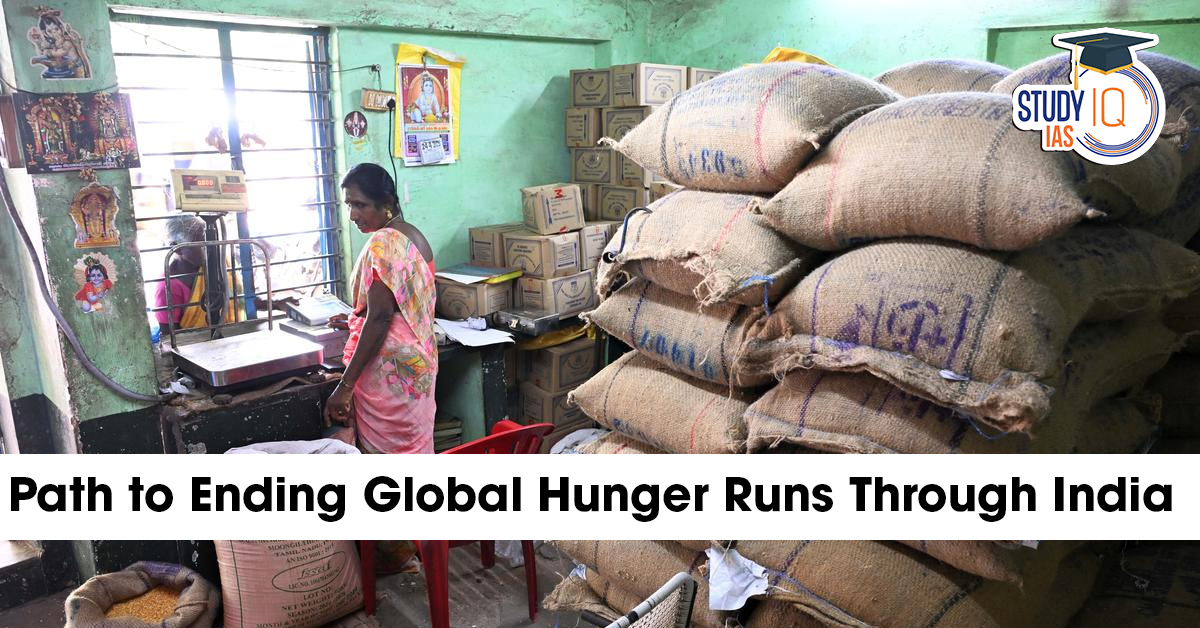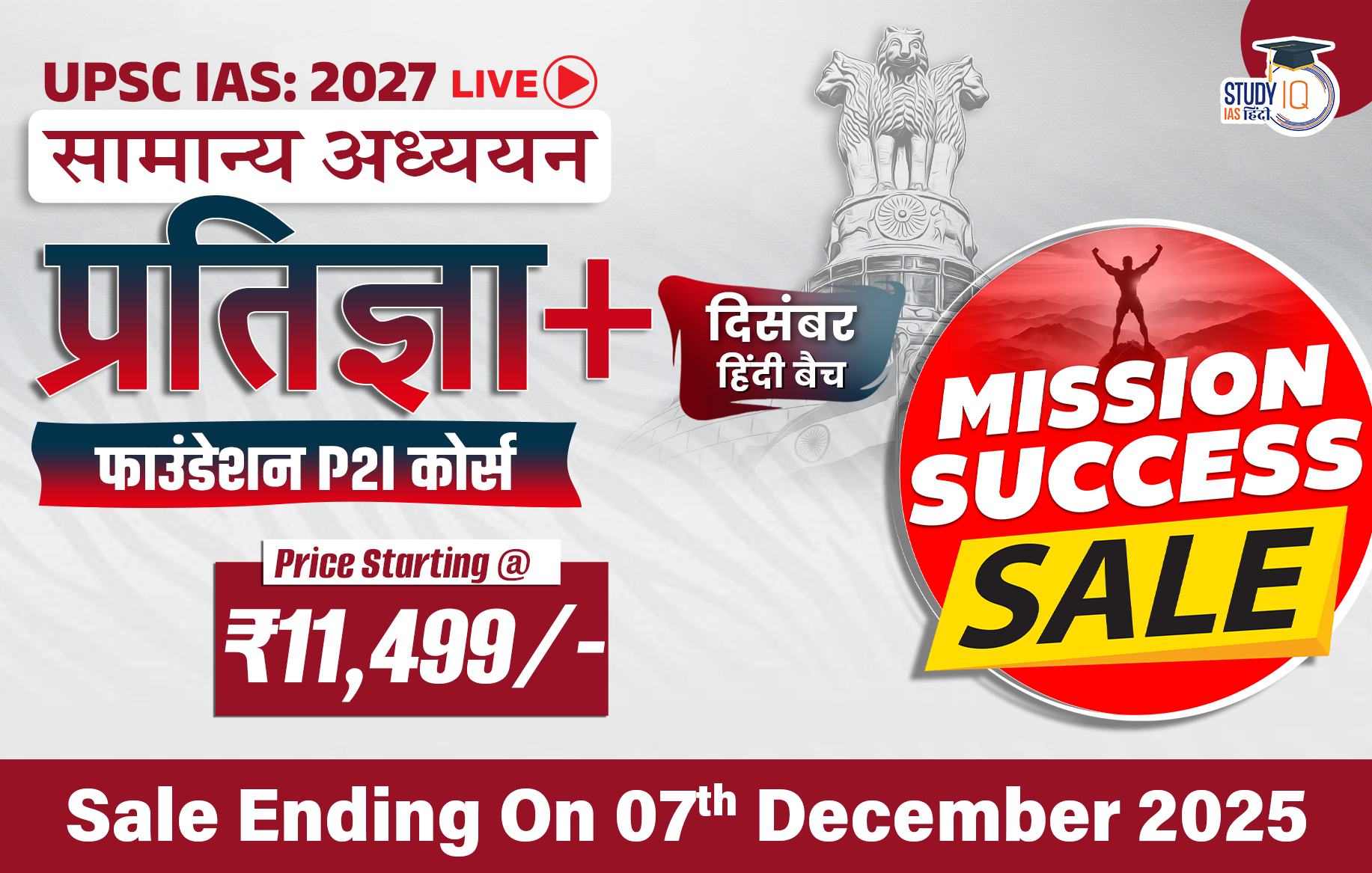Table of Contents
Context: According to The State of Food Security and Nutrition in the World 2025 (SOFI), undernourishment fell to 673 million (8.2% of the world’s population) in 2024, down from 688 million in 2023. India has played a decisive role in this progress by reforming its food security architecture and leveraging digital innovations.
India’s Achievements
Decline in Undernourishment: From 14.3% (2020–22) to 12% (2022–24) – 30 million fewer hungry
Government Policies Driving Decline
- National Food Security Act (NFSA, 2013): Legal right to subsidised grains.
- Revamped PDS: Digitalisation, Aadhaar seeding, biometric authentication, real-time inventory tracking.
- 800+ million people get subsidised food under the PDS.
- One Nation One Ration Card (ONORC): Ensured nationwide portability, especially for migrants.
- PM Garib Kalyan Anna Yojana (PMGKAY): Free foodgrains during COVID-19 and extended later.
- PM POSHAN (Mid-day Meal) & ICDS: Shift towards dietary diversity and nutrition sensitivity.
- Digital Agriculture Platforms: e-NAM, AgriStack, geospatial data → improving farm-to-market linkages.
Issues That Still Persist
- Nutritional Deficiencies: Micronutrient deficiency, anaemia, and obesity are rising.
- Eg., Over 60% of the population cannot afford nutrient-rich foods.
- Post-Harvest Losses: ~13% of food is lost between farm and market due to weak cold chain & logistics.
- Agricultural Skew: Focus still on cereals → limited production of pulses, fruits, vegetables, animal proteins.
- Climate Risks: Threats to food security from erratic rainfall, heatwaves, and resource stress.
Way Forward – How Issues Can Be Addressed
- Diversify Food Production: Incentivise pulses, fruits, vegetables, and animal-source foods.
- Strengthen Supply Chains: Invest in cold storage, warehouses, and digital logistics to reduce food loss.
- Affordable Healthy Diets: Subsidise nutrient-dense foods, expand “fortification” programmes.
- Women & FPO Empowerment: Support women-led enterprises, Farmer Producer Organisations, and climate-resilient farming.
- Nutrition-Centric Schemes: Integrate health, education, and agriculture policies for tackling malnutrition.
- Digital Advantage: Scale up AgriStack, e-NAM, and geospatial tools for better planning and distribution.
Conclusion
India’s journey shows hunger can be reduced at scale through smart policies, digital governance, and inclusive safety nets. The next phase must shift from food security to nutrition security, ensuring not just calorie sufficiency but healthy, affordable, and sustainable diets. India’s continued progress will be pivotal for achieving Zero Hunger (SDG-2) by 2030, both nationally and globally.


 World Summit on Disaster Management (WSD...
World Summit on Disaster Management (WSD...
 Domestic Systemically Important Banks (D...
Domestic Systemically Important Banks (D...
 The Missing Link in India’s Critical M...
The Missing Link in India’s Critical M...

























